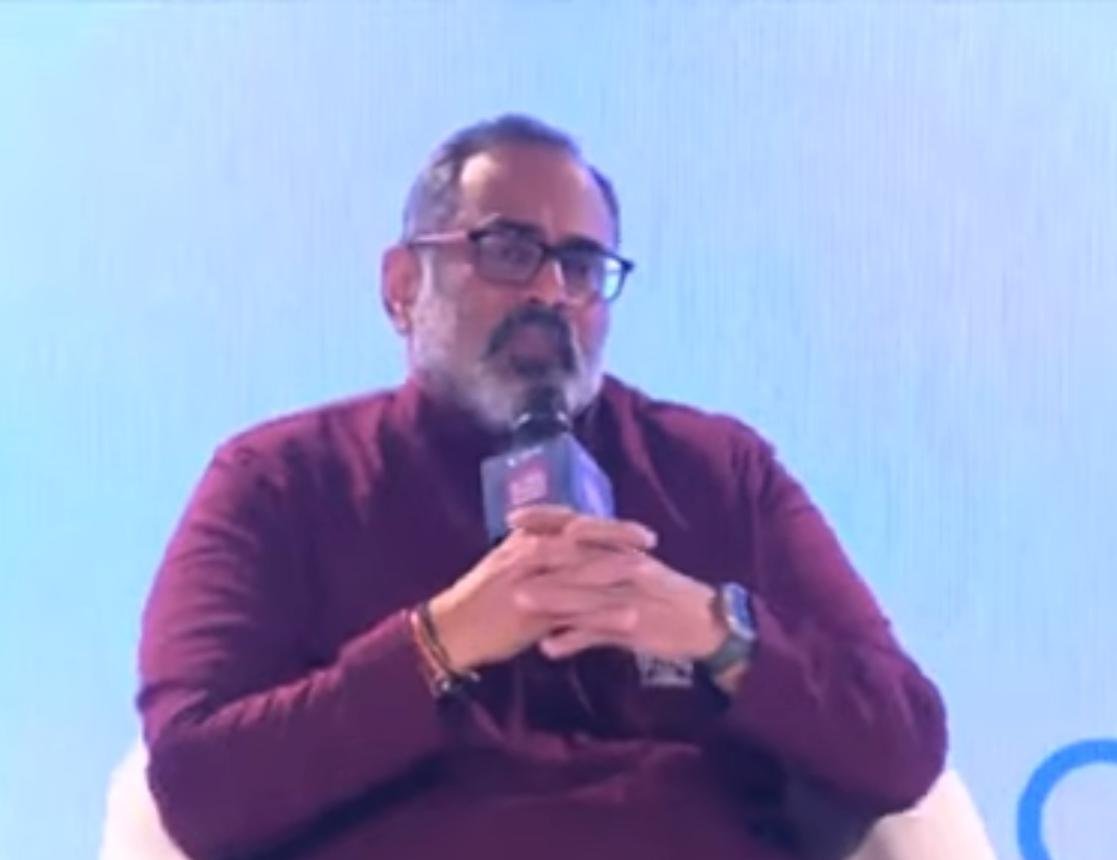Union Minister of State for Skill Development & Entrepreneurship and Electronics & IT, Rajeev Chandrasekhar, participated in a fireside chat with Evan Feigenbum at the Global Technology Summit 2023 on December 6, informed the PIB. During the conversation, the Minister discussed India’s aspirations to leverage emerging technologies and AI to create an environment conducive to innovation, good governance, and propelling the digital economy towards the envisioned 1 Trillion dollars by PM Narendra Modi.
“We consider AI to be a kinetic enabler of our digital economy. This perspective is particularly important as we step into the GPAI summit in Delhi on the 12th, 13th, and 14th. We are also preparing for the Korea Safety Summit scheduled for May 2024. It is crucial that, during these next six months, countries and governments around the world align towards establishing a common protocol or framework for AI. From our perspective, the digital economy is projected to constitute 20% of our GDP by 2026. Currently, we stand at 11%, a significant jump from 4% in 2014. So, the Internet and all of these emerging technologies are not just academic or just about innovation; they’re about real value addition to the economy—real jobs, real income, and the creation of genuine wealth,” said Chandrasekhar.
The Minister spoke on India’s approach to AI, emphasizing its role in transforming lives and enhancing good governance. He stated that India’s focus lies in the practical application of AI, highlighting the Prime Minister’s belief in the transformative power of technology to enhance people’s lives and improve government efficiency across regions, from the Northeast to the South, North, and West.
“AI will play a significant role in shaping healthcare, agriculture, education, skilling, security, and promoting inclusion through language translation over the next decade. Recognizing the constraint in our capacity, especially in training large, multi-parameter models, we are actively working on a comprehensive strategy to build the necessary capabilities. This includes developing real GPU capacity in both the public and private sectors,” said Chandrasekhar.
Recalling his experience at the Bletchley Summit in the UK, the Minister noted that it was an important milestone for 28 governments to sit down and, over the three days, and talk about AI. This, according to the Minister, aligned with India’s stance since 2021, emphasizing the need for discussions as India navigate new, powerful, and emerging technologies. “As we look at innovation and aim to expand the digital economy using these technologies, a conversation about guardrails becomes equally important. Over the last two and a half years, we have consistently emphasized safety and trust as crucial guardrails in technology, they are our fundamental principles. Therefore, it was satisfying to observe that the dominant conversations in Bletchley Park were about safety and trust in AI. I want to make it clear that India’s position is not to overtly demonize AI by solely viewing it through the prism of safety and trust. We consider AI to be the biggest and most significant invention of our times,” stated Chandrasekhar.
While speaking about India’s approach towards regulating AI and technology, Chandrasekhar said, “For the first time, we are transitioning from the abstract concept of self-regulation and diffuse responsibility for safety and trust to legally holding platforms accountable for these principles. This marks a significant step forward. Currently, we face some versions of AI challenges, particularly in dealing with social media and the general toxicity of the Internet. We are addressing misinformation, deepfakes, and other issues in a manner consistent with our three guardrails and principles.”
Download Nagaland Tribune app on Google Play

“There is also no one-size-fits-all model to adopt. Neither the European model nor the American model works for us. We are striving to demonstrate that there is a hybrid approach, balancing the U.S. model of letting the market regulate with the European model of prioritizing citizens’ rights. We aim to create a framework that fosters innovation while safeguarding the rights of every citizen, ensuring the Internet is a safe and trusted space for all,” asserted the Minister.
In the closing segment, the Minister addressed questions regarding India’s semiconductor journey, stating that the country is swiftly making up ground after several missed opportunities spanning the past 70 years.
“It started in January 2022 — Our policies outlines that we aim to be in manufacturing, which is the holy grail of semiconductors. Equally important to manufacturing, we consider packaging and packaging innovation as significant areas for us to develop capabilities in India for the next decade. In design, we firmly believe that existing legacy chip families, whether they are x86 or ARM, will be replaced with much more functional, AI-optimized devices in the future,” said Chandrasekhar. The Minister also mentioned that a whole new market is emerging, as NVIDIA has emphatically shown, for devices that will power products and platforms globally. In terms of talent, India is enhancing the entire spectrum of research, talent design, packaging, and fabrication over the last two years.
“I am pleased to report that we are almost catching up for 70 years of neglect in the semiconductor industry. Historically, we haven’t done much in the country regarding semiconductors, but in the last two years, we have made rapid progress,” remarked Rajeev Chandrasekhar.

